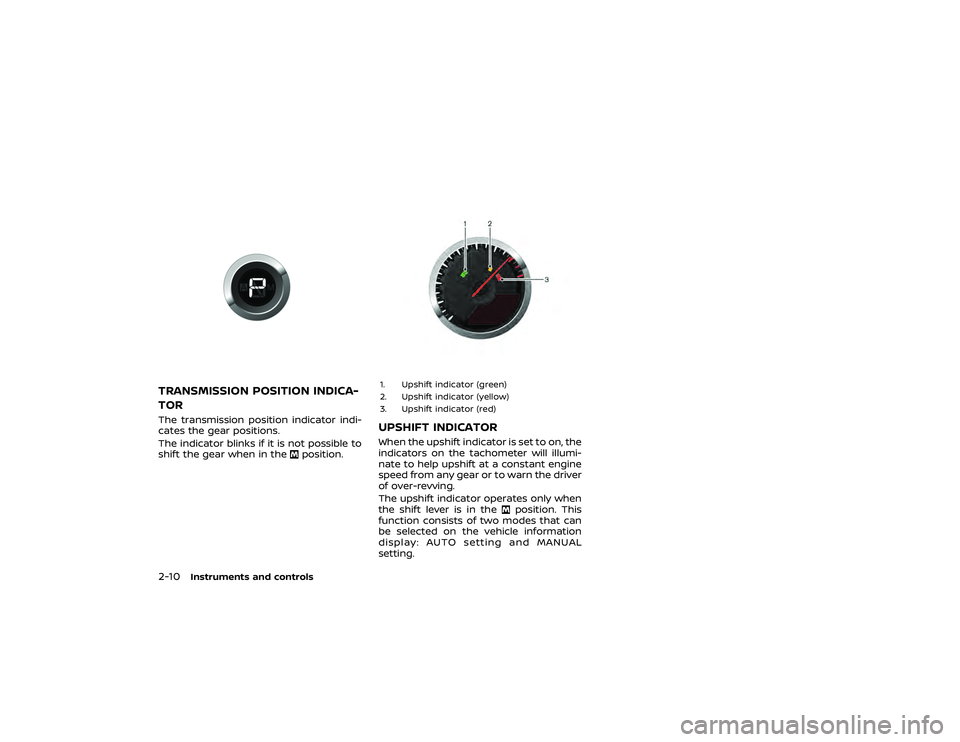WARNING
Do not attempt to top off the fuel
tank after the fuel pump nozzle
shuts off automatically. Continued
refueling may cause fuel overflow,
resulting in fuel spray and possibly a
fire. The fuel tank is full at the first
automatic shutoff.
To maximize vehicle performance, the
fuel tank is located as low as possible to
lower the vehicle center of gravity. The
tank is also divided into two parts. This
fuel tank design causes higher pressures
inside the tank than other vehicles so fuel
spillage is possible by trying to top off the
fuel tank after automatic shutoff.
The fuel tank pressure is higher when the
vehicle is hot, especially if the tank is more
than half full. If the cap is opened when
the vehicle is hot, it may cause fuel spray
and there may be a hissing noise. Open
the cap slowly, releasing the pressure
from the tank gradually. Also, if the
vehicle is refueled when the vehicle is
hot, the fuel pump may automatically
shut off before the tank is full. This does
not indicate that there is a malfunction. Refuel slowly or refuel after the vehicle
has cooled.
GASOLINE SMELLThe fuel temperature is higher when the
vehicle is hot. This may cause a gasoline
smell from the vehicle. This does not
indicate that there is a malfunction. The
smell will go away when the fuel tem-
perature has cooled.OUTSIDE TEMPERATURE DISPLAY
INDICATES HIGHER TEMPERATUREHeat from the engine compartment, ra-
diator and intercoolers can affect the
outside temperature display. The outside
temperature display may indicate a high-
er than actual temperature while driving
or stopped. This is normal.IDLE SPEED IS NOT STEADYThe idle speed may not be steady when
the engine compartment is extremely
hot. This is normal. The engine speed will
be steady when the engine cools down.
In this case, the Malfunction Indicator
Light (MIL) may come on. After a few
driving trips, the MIL should turn off. If the
light remains on after a few driving trips, it
is recommended you have the vehicle
inspected by a GT-R certified NISSAN
dealer.
GT-R Overview
GTR-25
GT-R SPECIFIC VEHICLE CHARACTERISTICS
or
position: The maximum
engine speed is 4,300 RPM
. Revving the engine when the engine
oil is at a low (below 32°F (0°C)) or
extremely high (over 275°F (135°C))
temperature: The maximum engine
speed is 4,000 RPM (The
position
will automatically change to the
position.)
ENGINE OUTPUT
High altitudeTo protect the engine, engine output is
controlled so that it does not increase at
altitude of approximately 3,281 ft (1,000
m) or higher.Engine output according to the
coolant temperatureThe engine output is controlled at a low
level when the engine coolant tempera-
ture is lower than approximately 158°F
(70°C) or higher than 230°F (110°C). This is
not a malfunction. If the temperature is lower than approxi-
mately 158°F (70°C), drive the vehicle until
it reaches normal operating temperature.
If the temperature is higher than 230°F
(110°C), perform cool-down driving proce-
dure. (
“Cool down” page GTR-14)
When the temperature of the engine
coolant is between 158°F (70°C) and
230°F (110°C), the engine output returns
to normal.
UNEVEN WEAR OF TIRESThe GT-R is equipped with high perfor-
mance, low profile, run-flat tires that are
optimized for performance and handling.
The life of these tires will be less than
those of tires installed on a typical vehicle,
and you are likely to experience uneven
tire wear and tire noise regardless of the
type of tire used.NOISES ARE HEARD WHILE DRIV-
ING
For models without NCCB (NISSAN
Carbon Ceramic Brake) package:Follow the instructions below when
parking the vehicle to help prevent
the brake rotor and brake pads from
rusting together. Failure to follow
the instructions could cause the
rotor and pads to rust together. If
the rotor and pads rust together,
there may be a popping noise and
some vibration when the vehicle is
driven, a wheel may not roll correctly,
or the brake pads could be damaged.
If the pads are damaged, this may
reduce the effectiveness of the brake
system which could cause a collision,
serious personal injury or death.
. The GT-R uses brake pad materials
that have high metallic content. The
brake pad material helps maintain
braking performance in a wide range
of weather and driving conditions.
For the first 3,000-6,000 miles (5,000-
10,000 km) of the vehicle’s service life,
and for the first 3,000-6,000 miles
(5,000-10,000 km) after a brake repla-
cement, the brake pad to brake rotor clearance is very small. When parking,
apply the parking brake and move the
shift lever to the
NOTICE
To help reduce the possibility of the
rotors and brake pads rusting:
Have the brake pads and/or rotors
quenched when the brake pads are
replaced. For detailed information
about quenching, contact a GT-R
certified NISSAN dealer.
After quenching the brake pads and/
or rotors, apply a brake of 0.5G to
stop the vehicle 6-7 times at least
once a week in a safe location. G-
force can be checked on the multi
function meter on the touch screen
display. Refer to the separate Multi
Function Display Owner’s Manual.
GT-R Overview
GTR-27









